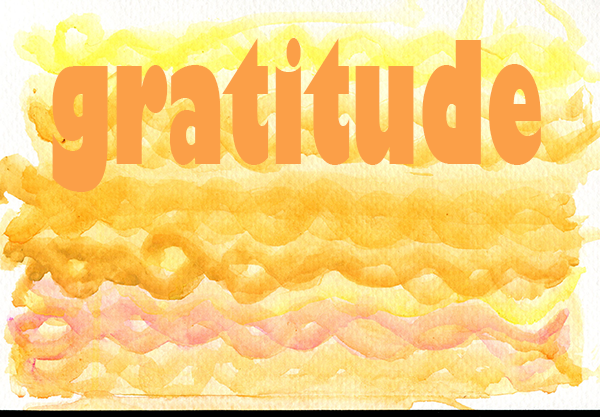Having a gratitude practice is good for you mind, body, and soul. Robert Emmons, a leading researcher on gratitude, explains that people who practice gratitude consistently report a host of benefits, including higher levels of positive emotions, lower blood pressure, and feeling less lonely and isolated. There is no downside to feeling grateful.
If you don’t already have a gratitude practice, you can get started by using one (or more) of these simple tools:
Gratitude Journal
At the end of each day, write 3-5 things for which you are grateful that happened during the day. Be as specific as you can, describing what, who, when, and where.
Gratitude jar
As you move through your day, make a note on a slip of paper describing something for which you are grateful. Put the note in a special jar you keep somewhere convenient and visible. Once a year (perhaps on Thanksgiving Day)), read the slips of paper.
Thank you notes
When someone does something helpful or thoughtful, send them a thank you note. Keeping a convenient stash of such notes and stamped envelopes makes it easy. A quick snail mail card surprises and delights people.
Sometimes, a gratitude practice sounds like a good thing, but people have a hard time sustaining it. Like a New Year’s resolution, good intentions may fade after a few weeks. Here are some ways you can keep your practice fresh:
Share your gratitude with someone.
If you live with someone, share your gratitude Journal with them each day. If you don’t have a roommate, call or text someone to double your fun.
Move gratitude into your body.
In your journal, describe the sensory experience of whatever made you grateful – sights, sounds, textures, tastes, smells. Take a few deep breaths and imagine the experience soaking into your body.
Make it a game.
See if you can bring a sense of playfulness to your practice. Make your gratitude jar colorful and fun. Use different colored pens in your gratitude Journal. Use a different gratitude prompt in your journal each day. Change things up to keep your practice from going stale and get boring.
Grateful people have several things in common, they:
- have a sense of abundance in their lives.
- Appreciate the contributions of others to their well-being.
- Recognize and enjoy life’s small pleasures.
- Acknowledge the importance of experiencing and expressing gratitude.
Sounds good, doesn’t it? Begin (or recommit to) your gratitude practice today!
In your journal:
- take three deep breaths and think about what’s happening in your body right now: heart pumping, digestion working, etc. Write a quick list of body processes for which you are grateful.
- Write a new prayer of gratitude with which to begin each day.
- What’s happening outside your window? Write a paragraph or poem celebrating the season.

